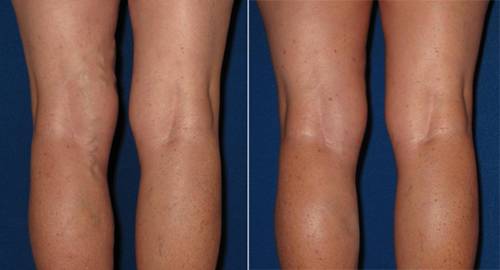If you’ve recently noticed varicose veins and spider veins showing up on your legs, now might be the best time to get them treated. Many doctors suggest the fall or winter as ideal times to receive a vein procedure. Just as varicose veins are a cosmetic issue, the suggested period is one as well. The colder weather will allow you to bundle up and conceal any healing vein procedures, making you ready to show them off once spring comes around! Varicose and spider veins are veins that bulge near the surface, causing patterns of bluish webs and ridges. These veins can be painful and may even ache during extended periods of standing or during exercise. Generally, there are no long-term side effects to varicose veins, although if left unchecked there can be complications with circulation in the areas where the veins appear. Treatment, therefore, is often aimed at reducing pain or for cosmetic reasons.

The treatment of varicose and spider veins has changed over the last several years and is now less invasive with quicker recovery time and better results. In the past, the typical treatment for varicose veins included removing the entire vein from the surface of the leg. This has been replaced by newer treatments for several reasons. Primarily, those patients with diabetes, a family history of heart disease, a current case of heart disease, or any circulation problems should be particularly careful before having any treatment that will remove their veins, as it could worsen the condition. Alternate treatments to vein removal should first be determined by taking a sonogram, also known as an ultrasound, to look at your veins and determine if there are any serious problems with them. The most common type of treatment following a sonogram is known as sclerotherapy. This type of therapy works by injecting the veins with a solution that causes blood vessels and vein to shrink and eventually disappear. This treatment is perfect for fall because you have plenty of time to seek follow up treatments as necessary and are able to hide spider and varicose veins as the treatments are performed.
Despite the relative ease of the procedure, there are a few things you should take into account before choosing a physician for treatment. If you go to a treatment center, be sure it’s accredited and that those performing the sonogram and sclerotherapy are certified to do so. Ultimately, it’s important to seek the best treatment possible in order to improve the rate of success. As always, the best source of medical knowledge is your physican, who can refer you to a phlebologist or someone who specializes in veins.

Sclerotherapy could be performed anytime of the year; however, many patients feel more comfortable wearing compresssion stockings during the colder months of the year. Moreover, complete healing, including the disappearance of the treated spider veins, bruising and pigmentation, may sometimes take several weeks.
Knowing the different ways on handling the varicose veins to help manage earlier to keep it more easy to prevent.